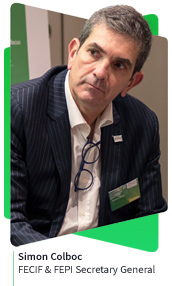|
 Simon Colboc Simon Colboc
FEPI Secretary General
Pension Savings meet green transition: could non-listed assets help solve Europe’s pension gap?
European policymakers are pushing hard to develop Europe’s financial markets, at a time when it seems our stock-markets are losing the fight against their US competitors (How the US is crushing Europe’s domestic exchanges, Philip Auger, Financial Times, 25 September 2023). This is the main purpose of regulations under the Capital Market Union (CMU), aiming to create unified markets across the Continent to make them more efficient and better able to compete worldwide.
At the same time, regulators across the EU also need to address the pension gap, as an aging population puts a lot of stress on unfunded pay-as-you-go pension systems. Policymakers look to the development of European financial markets to invest the Continent’s formidable household financial savings to help fund retirement.
However, this might be a case of fighting the previous war, not the coming one. In fact, financial assets set aside by households to prepare for retirement are already finding their way to fund Europe’s developing companies as well as infrastructure projects via non-listed funds, bypassing financial exchanges.
As we discussed in a recent session of the Jasper Forum, such developments are already in motion without waiting for political support, in France and in other European markets.
EU’s CMU efforts are not delivering
Despite the efforts of the European Commission to promote the Capital Market Union and to support the development of financial markets across Europe, it seems our markets are systematically falling behind their American competitors. The best (or worst) illustration is the large proportion of European companies selecting US markets for their IPOs.
Recent initiatives including the Retail Investment Strategy aim to bring more capital to the market by getting households to direct more of their assets to such investments. This is getting increasingly difficult at a time when households are wary of the risk associated with investing in financial markets – especially the ‘apparent’ risk associated with the daily fluctuation of volatile assets.
At the same time, attacks on the remuneration model of financial advisors and intermediaries are not helping households ensure they obtain the level of advice that would make them more comfortable changing their allocation of assets.
As a result, it is unclear how the various measures being proposed to support the development of the CMU are expected to have much of an impact on the situation – or even if this is really necessary.
Non-listed assets are increasingly popular with investors and with advisors
Indeed, as European households are looking for a better way to invest their financial savings, they are gradually turning away from capital-guaranteed, fixed-income based products that have been delivering meagre returns in the recent past, now the long-term movement of yield reduction that buoyed the value of such assets for the past 25 years seems over for good.
At the same time, savers are very reluctant to take on the risk associated with direct investment in the financial markets, even if they understand that the long-term returns are likely to be higher than if they stick to fixed-income investments.
Assets are shifting towards alternative investments
Financial advisors across various European markets have started to use non-listed assets as part of their clients’ asset allocation, to provide exposure to assets clients sometimes find easier to relate to (such as green infrastructure) or a way to manage the volatility of the portfolios (real estate-based investments or structured products, for example). A number of financial advice groups have included up to 20% non-listed assets in their clients’ portfolios.
We have seen institutional pension funds turning largely to non-listed assets for a while now, as these institutional players consider that the underlying investments are well aligned with their long-term needs and liabilities. They also usually have large enough portfolios that they can manage liquidity matters internally, even if the various instruments they use provide little liquidity on their own.
Pension savings meet green transition
The emergence of ESG considerations for long-term investors is also bringing additional focus on infrastructure funds and (more and more) private equity funds, that are bringing these matters to the forefront – despite the rear-guard action of some institutions.
There is an elegant efficiency to this approach, as clients can direct their financial investments towards assets that are well aligned with their personal preferences and with the long-term nature of their need to strengthen their financial situation in retirement.
Advisors have seized this opportunity to help their clients assess their needs and preferences and navigate the somewhat complex universe of available solutions – something no automated system has proven able to do yet.
This was discussed in more depth in a recent Jasper Forum roundtable co-organised with CMI Strategies and where Pierre Benoist d’Anthenay of Raise Infrastructure Fund and Jean-David Haas of NextStage Private Equity shared their views and recent experience.
|